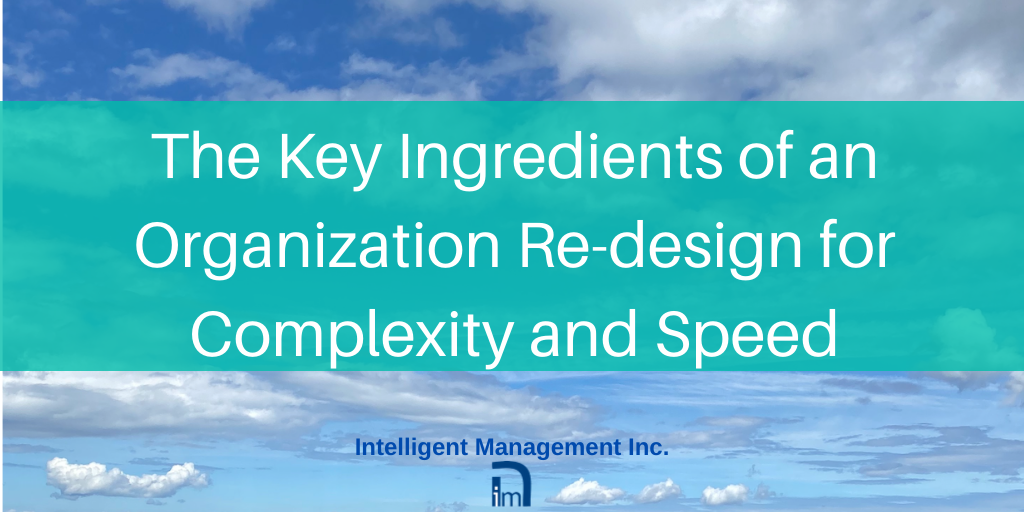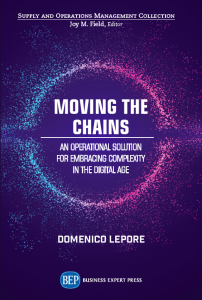
In the previous article in this series, our Founder Dr. Domenico Lepore, covered how to scale a business sustainably. Here in Part 5 he looks at the fundamental ingredients for an organizational re-design appropriate for the 21st century challenges of complexity.
Since the industrial revolution, the idea of control has been connected to a Newtonian, mechanistic worldview: to understand the whole all you need to know are the parts that make it up. Coherently, a gargantuan and incredibly complex measurement edifice has been built that rests on the concept that the more I understand the nature of the product cost, the more I can control my organization and steer it towards productivity. The conventional Hierarchies (functional silos) were built precisely for this reason: the more I can break it down, the more I can control it.
And it worked for many decades, basically from the industrial revolution all through the ‘60s. Accordingly, very many generations of leaders have been groomed by Business Schools to understand the whole as a sum of its parts.
Then, in the ‘70s everything started to crumble and by the end of the decade all the major American (and Western) corporations were on their knees.
What happened?
Simply speaking, after WWII, Japan, who had nothing to lose, started to heed Dr. Deming and his cry for a more evolved, systemic, approach to the increasing complexity of the world we were living in. (Sadly, “Reaganomics” disguised all the industrial issues facing American Industry with its financial gimmickry and the illusion that something can be created out of nothing, perpetrating for 30 more years an utterly distorted message on how sustainable wealth can be created).
The way “Out of the Crisis”, Deming said, is paved with Quality and its approach to Complexity. Such an approach rests on the understanding that organizations are systems, what we have come to see as oriented networks of interdependent components, and that such interdependencies have to be taken into account if we want to really govern and manage the system.
Accounting, an approach to, well … “counting”… that was developed in Italy hundreds of years before the concept of “speed” had been mathematically tackled by Galileo and Newton, simply has no answer to how to measure the effect of interdependencies.
Such an answer, Deming argued, can be found, instead, in a body of knowledge called Theory of Variation (developed in the first part of the last century by Walter Shewhart). The effect of interdependencies, i.e. what “emerges” from our conversations, when we do something together like scoring a sale, designing a new product, etc., can only be understood in terms of the statistical fluctuations that characterize the output of these interactions.
Unfortunately, the study of statistical fluctuations (largely captured by a method and thought process called “Statistical Process Control”) is not part of the curriculum of any business school and is largely ignored by the vast majority of decision makers. Yes, it is damning.
The “New Economics” advocated by Dr. Deming can only take hold if we embrace complexity (instead of trying to break it down) and equip ourselves with the necessary knowledge.
If a new leadership has to emerge, it can only happen if it is guided by new measurements for sustainable wealth creation, a coherent management style and an appropriate organizational re-design.
All through the ‘80s and the ‘90s Dr. Goldratt created the vessels and the thought process to sustain wealth creation. The centrepiece of his work is the concept of “Constraint”, the strategically chosen leverage point where the organization generates the maximum value for the customer.
Basically, Dr. Goldratt argues, IF you choose your constraint strategically (what you want to leverage, what provides the maximum value in the eyes of the market you want to serve) THEN it only makes sense to build the whole organization to serve best the constraint.
And what, then, is the “constraint” of a project? What is a project “constrained by”? I will leave the answer to your eagerness to learn from reading Dr. Goldratt’s books, a truly life altering experience; here it will suffice to say that the Theory of Constraints (TOC) calls the constraint of a project its critical chain: The longest sequence of dependent events once the availability of resources has been taken into account.
In order to build an organization around this chain it is then necessary to maximize the speed at which this chain is operated. Yes, like in (American) football, we need to Move the Chains fast if we want to “score”.
And how do we do that?
Answering this question has been our journey over the last ten years. It is our little, yet, we like to believe, not negligible contribution to the development of a form of management that makes sense. We call it “Intelligent Management”.
The next post in this series looks at building a systemic organization via a network of synchronized competencies in projects. Sign up to receive our weekly blog in the form at the top of this page.
- OTHER ARTICLES IN THIS SERIES:
- Deming, Goldratt and Critical Chain – the Pillars for Transforming Management and Organizations Today
- A New Perspective for Business Management
- Solving the Core Problem that Prevents Companies from Achieving Sustainable Growth
- How to Scale a Business Sustainably
- The Key Ingredients of an Organization Redesign for Complexity and Speed
- How to Improve Company Culture and Performance with a Transformation Based on Competencies
- Transforming to an End-to-end Operating Model with a Whole System Technology
- Scheduling a Project – the Most Critical Activity for Every Business
Contact: intelligentmanagement@sechel.ws
SCHEDULE AN INTRODUCTORY CALL WITH US ‘







Nice website